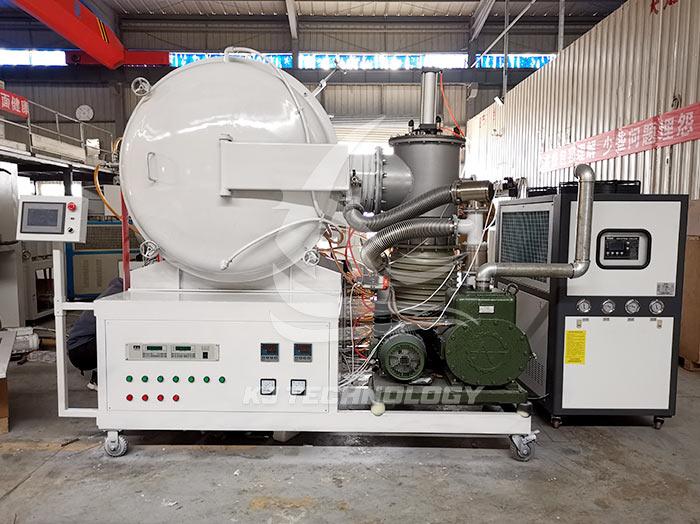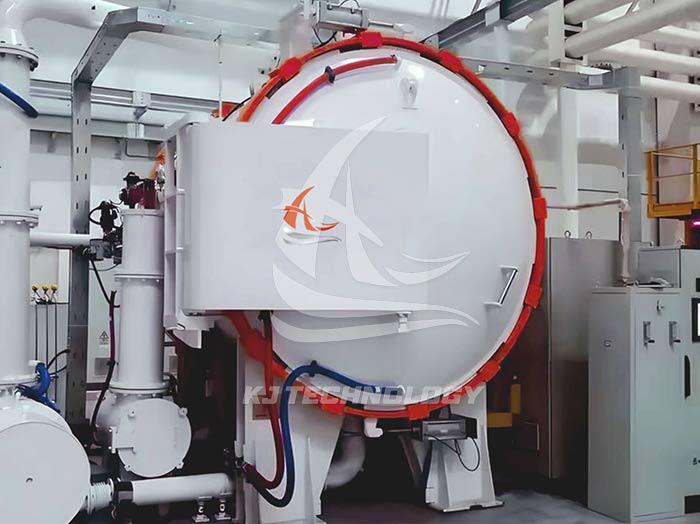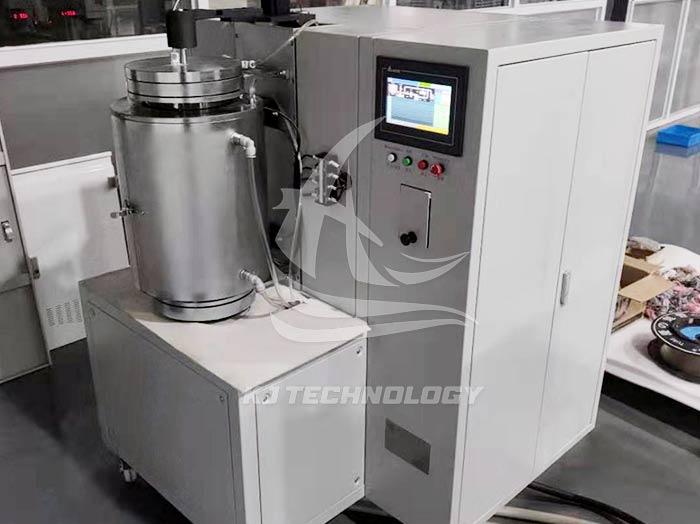What should be noted when using a laboratory vacuum furnace?
 06-26-2025 Author: KJ technology
06-26-2025 Author: KJ technology
The laboratory vacuum furnace must strictly follow the operating specifications during use to ensure equipment safety, reliable experimental results, and adequate personnel protection. The following is an explanation from four dimensions: equipment operation, safety protection, experimental process control, and maintenance:
1. Equipment operation specifications
Preheating and temperature control
Step heating: Set a staged heating curve according to process requirements (such as 5 ℃/min to 300 ℃, 10 ℃/min to target temperature) to avoid thermal stress causing cracking of the furnace body or sample.
Temperature uniformity: Use thermocouples for multi-point calibration to ensure that the temperature difference inside the furnace is ≤ ± 5 ℃ (high-end equipment can reach ± 1 ℃).
Vacuum degree adjustment
Vacuum pumping rate: ≤ 10 Pa/min in the rough pumping stage (mechanical pump), ≤ 10 ⁻ Pa/min in the fine pumping stage (molecular pump), to avoid rapid release of adsorbed gases on the sample surface that may cause cracking.
Dynamic balance: During brazing or sintering, maintain a vacuum degree of 10 ⁻ ²~10 ⁻ ³ Pa, and if a protective gas (such as Ar) needs to be introduced, control the pressure at 0.01~0.1 MPa.
atmosphere control
Gas purity: Inert gases (Ar, N ₂) have a purity of ≥ 99.999% (5N grade), while active gases (H ₂, NH ∝) require purification equipment for deoxygenation and dehumidification.
Flow control: Use a mass flow meter (MFC) to accurately regulate gas flow with an error of ≤± 1% F.S.
2. Safety protection measures
Electrical safety
Grounding resistance: The grounding resistance of the furnace body is ≤ 4 Ω, and the leakage protection device should be regularly tested (operating current ≤ 30 mA).
Insulation monitoring: The insulation resistance between the heating element and the furnace shell is ≥ 1 M Ω (tested with a 500 V megohmmeter).
Pressure safety
Overpressure protection: Install pressure sensors and rupture discs, with the rupture pressure set at 1.25 times the design pressure.
Vacuum leak detection: Use a helium mass spectrometer leak detector with a leak rate of ≤ 10 ⁻⁹ Pa · m ³/s.
high temperature protection
Thermal insulation measures: The furnace door observation window adopts double-layer quartz glass (temperature resistance ≥ 800 ℃) and is equipped with laser protective curtains.
Emergency stop: Set a red emergency stop button on the control panel, and cut off the power for ≤ 0.1 seconds.
3. Experimental process control
Sample pretreatment
Cleanliness: Metal samples are cleaned with acetone ultrasonic for 10 minutes, and ceramic samples are pre burned with air at 1200 ℃ to remove air.
Furnace loading method: Sample spacing ≥ 5 mm to avoid thermal radiation obstruction; Volatile substances (such as Zn) are placed in a sealed crucible.
Process parameter record
Data collection: Use a paperless recorder or PLC system to record temperature, vacuum degree, and gas flow rate, with a sampling frequency of ≥ 1 time/s.
Exception handling: When the temperature overshoot is ≥ 50 ℃ or the vacuum degree drops by ≥ 1 order of magnitude, an alarm will be automatically triggered and the machine will be shut down.
cooling control
Segmented cooling: The high-temperature section (≥ 800 ℃) is cooled along with the furnace, the medium temperature section (300-800 ℃) is cooled by N ₂ forced cooling (flow rate ≤ 5 L/min), and the low-temperature section (≤ 300 ℃) can be cooled naturally by opening the furnace door.
4. Key points of maintenance and upkeep
Daily inspection
Seals: Check O-rings and flange gaskets weekly, and replace them immediately if cracks or hardening are found.
Vacuum pump oil: Replace the mechanical pump oil every 200 hours, keeping the oil level at 1/2~2/3 of the viewing window.
periodic calibration
Thermocouple: Calibrate with a standard thermometer every six months, and replace if the error exceeds ± 2 ℃.
Vacuum gauge: Calibrate annually with a standard vacuum gauge (such as a Maxwell gauge), and adjust or repair when the range drift is ≥ 5%.
Deep maintenance
Heating element: Check the resistance value every 1000 hours, and replace it if the change exceeds ± 10%.
Inner wall cleaning: After every 50 experiments, wipe the furnace with alcohol to remove metal vapor deposits.
5. Qualification requirements for operators
Training certification: Obtain the Special Equipment Operator Certificate (for vacuum equipment operation) through training provided by equipment manufacturers or third-party organizations.
Emergency drill: Conduct a quarterly emergency drill for accidents such as vacuum leaks, fires, and electric shocks.
By strictly following the above specifications, laboratory vacuum furnaces can achieve efficient and safe operation, with experimental repeatability errors controlled within ± 3%, and equipment lifespan extended to over 10 years. It is recommended to establish a standard operating procedure (SOP) for equipment operation and conduct regular internal audits and improvements.








